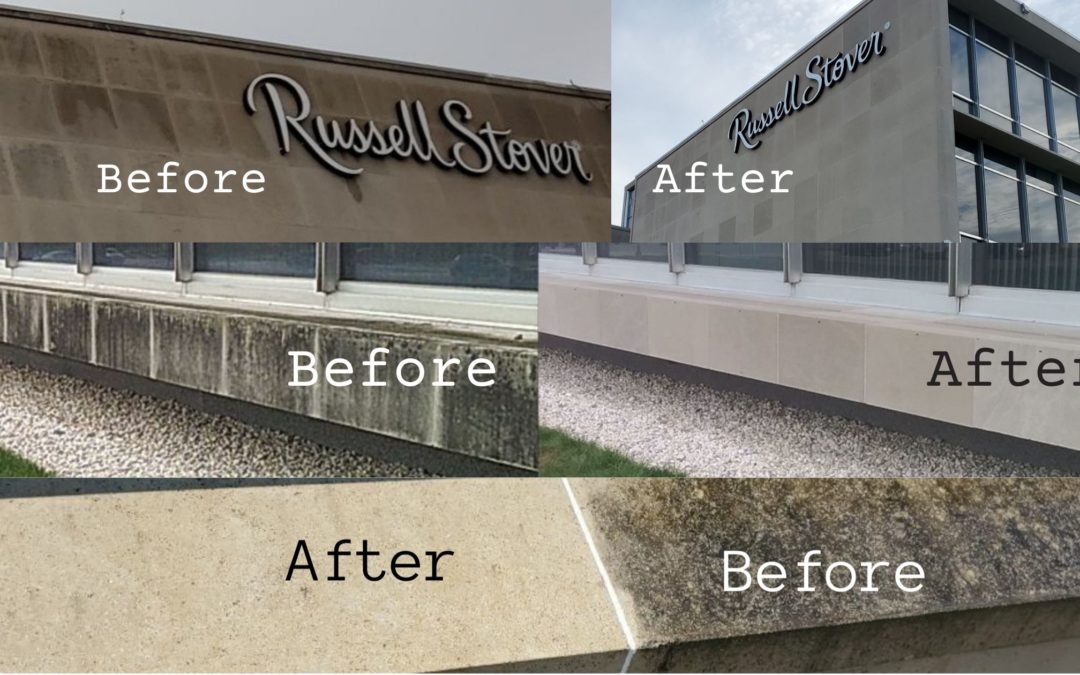It’s very common to see the exterior stone on buildings appear dirty and stained over time. Dark streaks and darkening of entire facades are hard to prevent in many cases. However, finding main sources of the staining can be removed, lessening the effects of the build-up. Below are some common causes of stone masonry staining and other damage these contaminants can cause.
Carbon Based Pollution
Vehicle exhaust is the common source of this type of contaminant. It is often pulled into the pores and deposited within the exterior giving a food source for certain bacteria to grow. When this is occurring, it is common to see black staining. The black color comes from the bacteria growth and not the carbon. Softer and more porous stones such as limestone will often exhibit this type of staining particularly at the features that stick out from the wall such as at cornices, copings, and specialty window features.
This type of staining is not only an eyesore but can be devastating as the bacteria grows. The bacteria colony can push against the pores and cause the masonry to fail if left untreated for too long.
Biologic and Plant Growth
Biologic growth such as algae and moss stems from these organisms feeding off moisture trapped within the stone and using the sun as its food source. It often occurs on lower portions of exterior walls and shaded sides of a building.
Plant growth is particularly detrimental to historic buildings and should always be removed immediately upon discovery. It is important that all the plant’s roots are removed which may require removal and resetting of the affected masonry. Often this occurs when plants such as ivy grow close to the base of a structure and send runners up the wall. The ivy grabs hold of the small pores in the stone’s surfaces or the surrounding mortar joints. These roots will eventually expand and cause small openings for moisture to infiltrate the structure which results in several issues and eventual failure of the wall.
Efflorescence
Efflorescence is a natural occurrence in exterior facades. It refers to the naturally occurring minerals or salts being pulled out to the surface through evaporation of moisture which contains the dissolved minerals. When the moisture reaches the surface of the wall it will evaporate and leave the minerals behind. Efflorescence can come in many different colors including blue, green, orange and most often white. Once cleaned efflorescence will often return if the underlying issue is not addressed. This underlying issue is the existence of moisture within the structure. Moisture may exist for several reasons and every occurrence of efflorescence should be investigated.
Metallic stains can occur from naturally occurring minerals within stones or from iron intentionally placed within the structure for reinforcing of attachment of items to the wall. Often historic structures will have architectural features created from copper that will bleed onto the masonry as they oxidize leaving green streaks behind as rain washes down the face of the building.
For more information regarding exterior staining and deep cleaning, contact Russ at KCR today!

